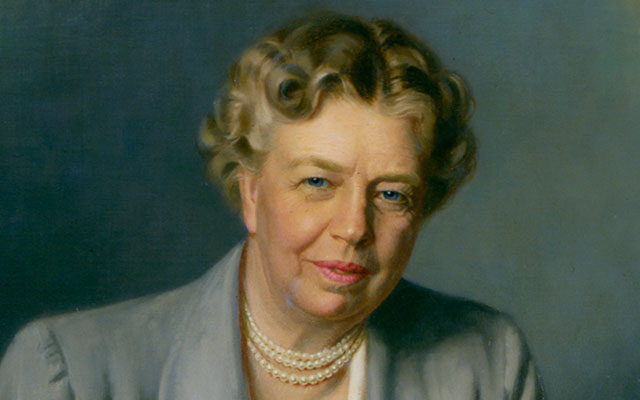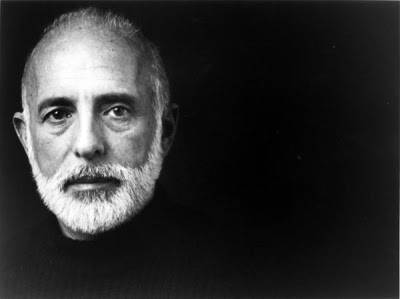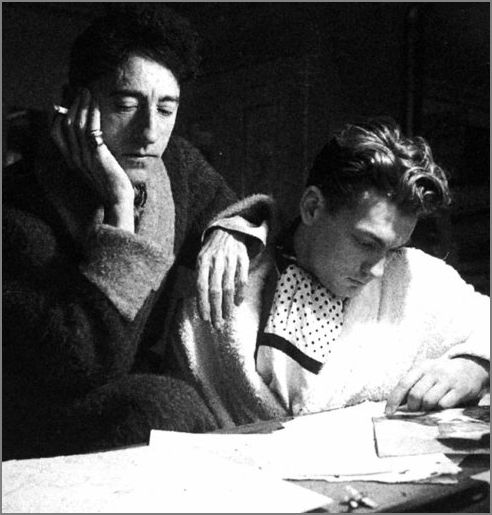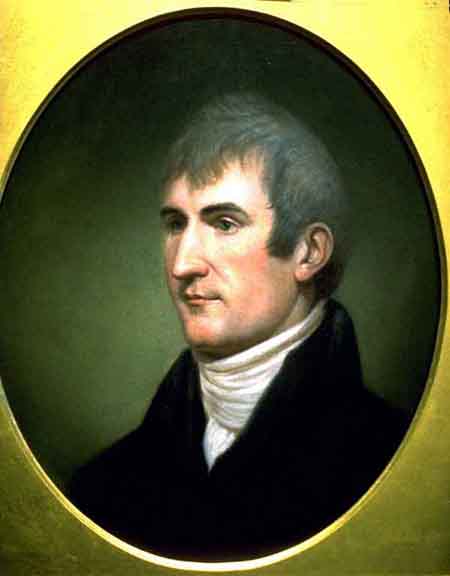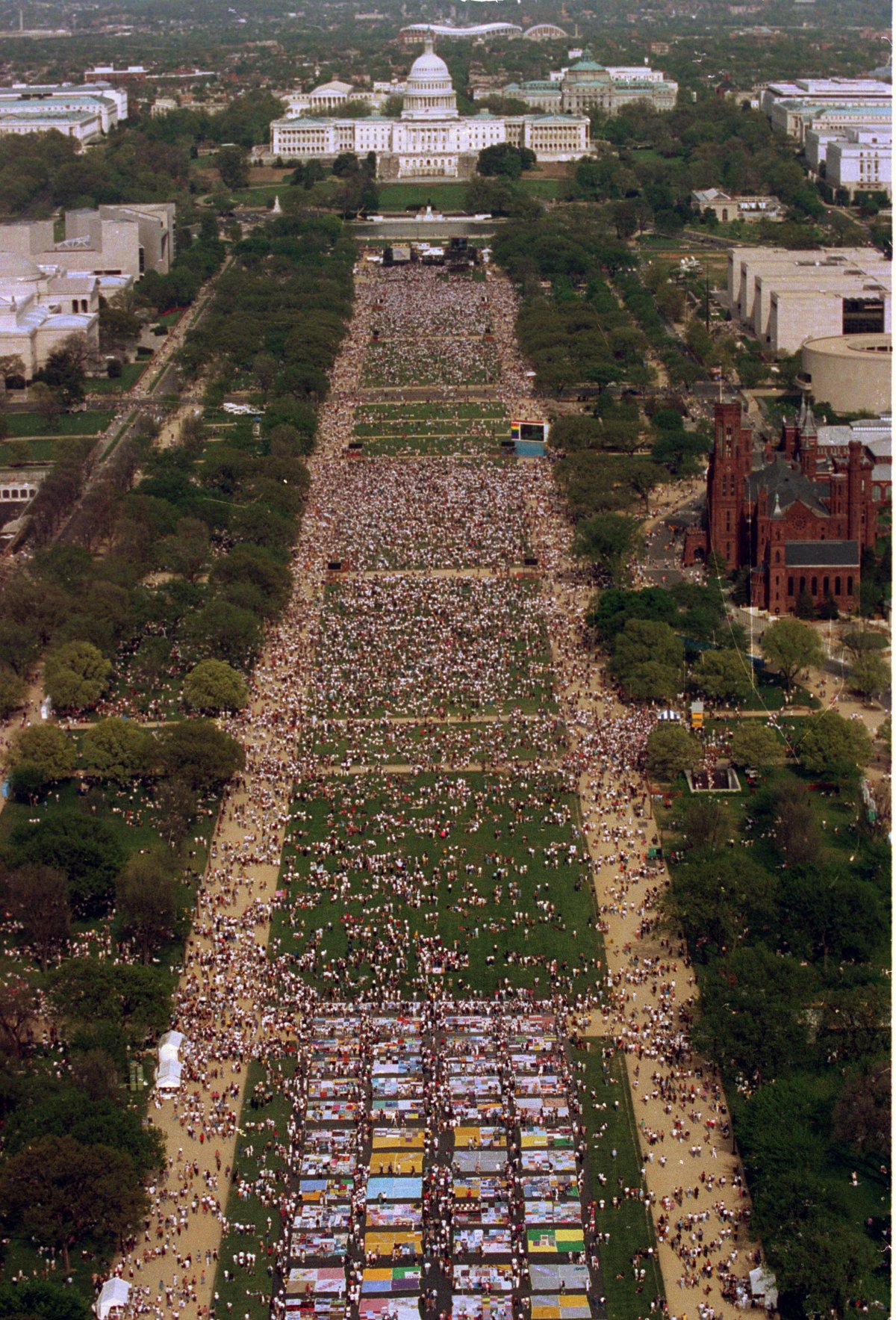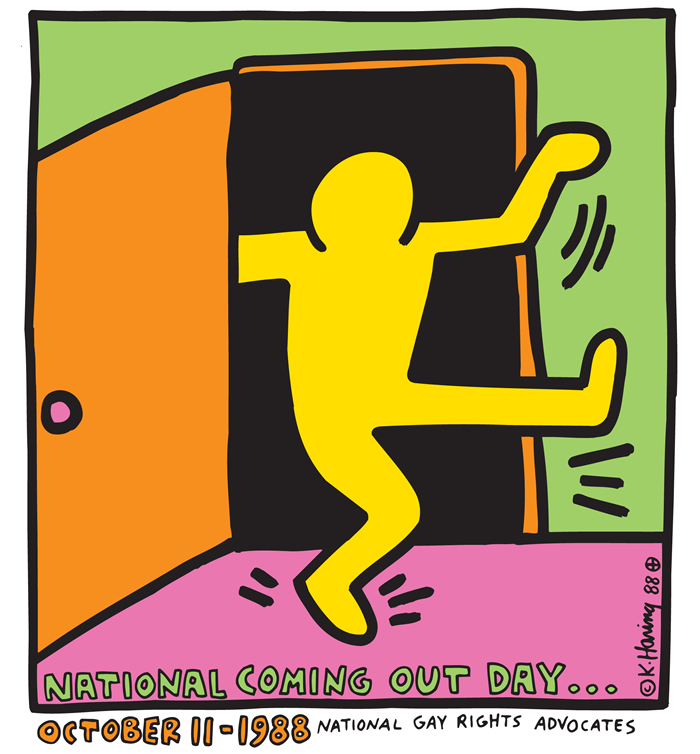|
Gay Wisdom for Daily Living brought to you by White Crane Institute ͏ ͏ ͏ ͏ ͏ ͏ ͏ ͏ ͏ ͏ ͏ ͏ ͏ ͏ ͏ ͏ ͏ ͏ ͏ ͏ ͏ ͏ ͏ ͏ ͏ ͏ ͏ ͏ ͏ ͏ ͏ ͏ ͏ ͏ ͏ ͏ ͏ ͏ ͏ ͏ ͏ ͏ ͏ ͏ ͏ ͏ ͏ ͏ ͏ ͏ ͏ ͏ ͏ ͏ ͏ ͏ ͏ ͏ ͏ ͏ ͏ ͏ ͏ ͏ ͏ ͏ ͏ ͏ ͏ ͏ ͏ ͏ ͏ ͏ ͏ ͏ ͏ ͏ ͏ ͏ ͏ ͏ ͏ ͏ ͏ ͏ ͏ ͏ ͏ ͏ ͏ ͏ ͏ ͏ ͏ ͏ ͏ ͏ ͏ ͏ ͏ ͏ ͏ ͏ ͏ ͏ ͏ ͏ ͏ ͏ ͏ ͏ ͏ ͏ ͏ ͏ ͏ ͏ ͏ ͏ ͏ ͏ ͏ ͏ ͏ ͏ ͏ ͏ ͏ ͏ ͏ ͏ ͏
|
|
||||
| This Day in Gay History | ||||
October 11Born 1884 - ELEANOR ROOSEVELT, First Lady of the United States born (d. 1952) American political leader who used her influence as an active First Lady from 1933 to 1945, longer than any other First Lady, to promote the New Deal policies of her husband, President Franklin Delano Roosevelt, as well as taking a prominent role as an advocate for civil rights. After FDR’s death in 1945, she continued to be an internationally prominent author and speaker for the New Deal coalition. She was a suffragist who worked to enhance the status of working women, although she opposed the Equal Rights Amendment because she believed it would adversely affect women. During the 1932 Presidential Campaign, Lorena Hickok of the Associated Press was assigned to cover Mrs. Roosevelt. At first the business relationship was rocky. Hickok didn't believe it was worth the paper's time and money to report on Mrs. Roosevelt, and Mrs. Roosevelt wasn't happy about the intrusion on her privacy. Besides that, Mrs. Roosevelt came from a high class, aristocratic background, and Hickok came from a brash and rustic one. She was at home playing poker with the guys, smoking, and drinking. In time, their friendship became very close and intimate. Franklin D. Roosevelt didn't seem to mind, as he was busy with his own romantic affairs. Due to the public nature of Mrs. Roosevelt's life, she and Hickok were often separated. Even so, they wrote daily letters to each other. Roosevelt wrote ten to fifteen page letters daily to Hick for a time. In one Hickok writes: "Good night, dear one, I want to put my arms around you, and kiss you at the corner of your mouth. And in a little more than a week - I shall!" and Mrs. Roosevelt writes "Hick darling, All day I've thought about you & another birthday I will be with you & yet tonight you sounded so far away & formal. Oh! I want to put my arms around you. I ache to hold you close. Your ring is a great comfort. I look at it and think she does love me, or I wouldn't be wearing it." In 1941, Hickok moved into the Whitehouse with the Roosevelts when she took a post in Washington. Some of the passion between the two seems to have died by this point. Mrs. Roosevelt was not able to give Hickok as much from their relationship as she wanted, yet Hickok remained because at least they had something. They remained friends until Mrs. Roosevelt's death in 1962. Hickok destroyed many of the letters Mrs. Roosevelt sent to her and edit personal references out of many others. Those that remain still hint at an intimate love between the two women. Susan Quinn's marvelous Eleanor and Hick is an intimate portrait that moves beyond the speculation and provides a loving history of these two powerful women. 1918 - JEROME ROBBINS, American choreographer born (d. 1998) Among the numerous stage productions he worked on were On The Town, High Button Shoes, The King and I, The Pajama Game, Bells Are Ringing, West Side Story, Gypsy: A Musical Fable and Fiddler on the Roof. For much of his life, Robbins pursued a career in both ballet and Broadway theater. He lived in a world of like-minded collaborators, most of whom were his age, Jewish, New Yorkers, leftist and -- among the men – Gay. Died 1963 - JEAN COCTEAU, French writer died (b. 1889) French poet, novelist, dramatist, designer, boxing manager and filmmaker. His versatile, unconventional approach and enormous output brought him international acclaim. In his early twenties, Cocteau became associated with Marcel Proust, Andre Gide, and Maurice Barrès. The Russian ballet-master Sergei Diaghilev challenged Cocteau to write for the ballet - "Astonish me," he urged. This resulted in Parade which was produced by Diaghilev, designed by Pablo Picasso, and composed by Erik Satie in 1917. An important exponent of Surrealism, he had great influence on the work of others, including the group of composer friends in Montparnasse known as Les Six. The word Surrealism was coined, in fact, by Guillaume Apollinaire to describe Parade, a work which was initially not well-received. In 1918 at the age of 29 he met the 15-year-old poet Raymond Radiguet. The two collaborated extensively, socialized, and undertook many journeys and vacations together. Cocteau also got him exempted from military service. In admiration of Radiguet's great literary talent, Cocteau promoted his friend's works in his artistic circle and also arranged for the publication by Grasset of Le Diable (a largely autobiographical story of an adulterous relationship between a married woman and a younger man), exerting his influence to garner the "Nouveau Monde" literary prize for the novel. Cocteau is best known for Les enfants terrible the 1929 play, Les parent terribles the 1948 film, and the 1946 film, Beauty and the Beast. Cocteau died of a heart attack at his chateau in Milly-la-Foret, only hours after hearing of the death of his friend, the French singer Edith Piaf. He is buried in the garden of his home in Milly La Foret, Essonne, France. The epitaph reads: "I stay among you." Noteworthy 1809 - MERIWEATHER LEWIS, American explorer (Lewis & Clark) died (b. 1774) Lewis was appointed private secretary to President Thomas Jefferson in 1801. He died under mysterious circumstances of two gunshot wounds in 1809 at a tavern called Grinder’s Stand, about 70 miles from Nashville, Tennessee, on the Natchez Trace, while in route to Washington to answer complaints about his actions as governor. Whether Lewis committed suicide or was murdered remains a mystery to this day. Jefferson believed the former, while his family continually maintained the latter. Lewis never married due to his shy personality, we’re told. A case could also be made that he was a same-sex loving man. For many years, Lewis's legacy was overlooked, inaccurately assessed, and even tarnished by his alleged suicide. Yet his contributions to science, the exploration of the Western U.S., and the lore of great world explorers, are incalculable. Several years after Lewis's death, Thomas Jefferson wrote: Of courage undaunted, possessing a firmness and perseverance of purpose which nothing but impossibilities could divert from its direction, ... honest, disinterested, liberal, of sound understanding and a fidelity to truth so scrupulous that whatever he should report would be as certain as if seen by ourselves, with all these qualifications as if selected and implanted by nature in one body for this express purpose, I could have no hesitation in confiding the enterprise to him. He had a luminous and discriminating intellect." For more discussion of the Lewis and Clark and the Corps of Discover Expedition see GayWisdom SEPTEMBER 23 1987 - THE 2ND MARCH ON WASHINGTON FOR LESBIAN AND GAY RIGHTS. More than a half million people (between 300,000 and 1,000,000, according to organizers...considerably more than the number that attended the current occupant of the White House's inauguration) descended on the capital to participate in the second national March on Washington. Many of the marchers were angry over the government's slow and inadequate response to the AIDS crisis, as well as the Supreme Court's 1986 decision to uphold sodomy laws in Bowers v. Hardwick. With the first display of the NAMES Project AIDS Memorial Quilt, the 1987 march succeeded in bringing national attention to the impact of AIDS on Gay communities. In the shadow of the U.S. Capitol, a tapestry of nearly two thousand fabric panels offered a powerful tribute to the lives of some of those who had been lost in the pandemic. The march also called attention to anti-Gay discrimination, as approximately 800 people were arrested in front of the Supreme Court two days later in the largest civil disobedience action ever held in support of the rights of Lesbians, Gay men, bisexuals, and transgender people. The 1987 March on Washington also sparked the creation of what became known as BiNet U.S.A. and the National Latina/o Lesbian, Gay, Bisexual, and Transgender Organization (LLEGÓ), the first national groups for bisexuals and GLBTQ Latinas and Latinos, respectively. Prior to the march, bisexual activists circulated a flyer entitled "Are You Ready for a National Bisexual Network?" that encouraged members of the community to be part of the first bisexual contingent in a national demonstration. Approximately 75 bisexuals from across the U. S. participated and began laying the groundwork for an organization that could speak to the needs of bi-identified people and counter the animus against bisexuals that was commonplace in both Lesbian and Gay communities and the dominant society. By 1987, Latino GLBTQ activists from Los Angeles, Houston, Austin, and elsewhere had been meeting for two years, discussing ways to work together to further the basic rights and visibility of GLBTQ Latinas and Latinos. But with AIDS having a disproportionate impact on Latino GLBTQ communities throughout the United States, the activists recognized the need for a national organization and met at the March on Washington to form what was then called NLLGA, National Latina/o Lesbian and Gay Activists. Renaming themselves LLEGÓ the following year, the group has since expanded to address issues of concern to Lesbian, Gay, bisexual, and transgender Latinas and Latinos in other countries. Along with the formation of new national groups, the most lasting effects of the weekend's events were felt on the local level. Energized and inspired by the march, many activists returned home and established social and political groups in their own communities, providing even greater visibility and strength to the struggle for Lesbian, Gay, bisexual, and transgender rights. The date of the march, October 11th, has been celebrated internationally ever since as National Coming Out Day to inspire members of the GLBTQ community to continue to show, as one of the common march slogans proclaimed, "we are everywhere." 1988 - NATIONAL COMING OUT DAY -- National Coming Out Day was founded by Robert Eichberg and Jean O'Leary on October 11, 1988 in celebration of the first Gay march on Washington D.C. a year earlier. The purpose of the march and of National Coming Out Day is to promote government and public awareness of Gay, bisexual, Lesbian and transgender rights and to celebrate homosexuality. National Coming Out Day is a time to publicly display Gay pride. Many choose this day to come out to their parents, friends, co-workers and themselves. | ||||
|
|8|O|8|O|8|O|8|O|8|O|8|O|8|O|8| Gay Wisdom for Daily Living from White Crane Institute "With the increasing commodification of gay news, views, and culture by powerful corporate interests, having a strong independent voice in our community is all the more important. White Crane is one of the last brave standouts in this bland new world... a triumph over the looming mediocrity of the mainstream Gay world." - Mark Thompson Exploring Gay Wisdom & Culture since 1989! |8|O|8|O|8|O|8|O|8|O|8|O|8|O|8| | ||||
|
|||||
|

